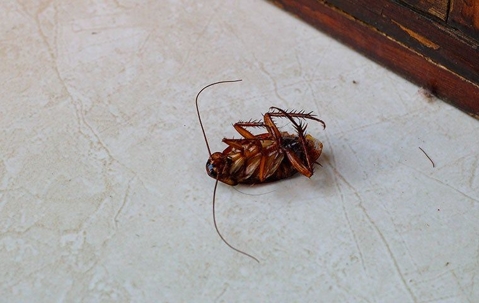
Roaches are notorious for their resilience and ability to thrive in even the most challenging environments. One question that often arises is whether these resilient creatures can sense death, particularly among their own kind. While roaches may not possess human-like consciousness or understanding of mortality, their highly developed sensory systems allow them to detect subtle cues associated with death. This article delves into the fascinating world of roach behavior and explores how they react to deceased cockroaches.
This article will examine the role of pheromones in roach communication, analyze how roaches detect dead cockroaches, and discuss the potential reasons behind their attraction to these remains. We’ll also explore the concept of pain perception in roaches and shed light on whether they experience distress when killed.
Roach Pheromone Sensitivity
Roaches rely heavily on pheromones, chemical signals released by individuals to communicate with each other. These potent scents convey a wide range of information, including mating readiness, alarm signals, and even the location of food sources. A roach’s antennae are equipped with specialized receptors that detect these minute pheromonal cues, allowing them to navigate their environment and interact with fellow roaches effectively.
The sensitivity of roach pheromone detection is remarkable. They can perceive incredibly low concentrations of pheromones, often at levels undetectable to the human nose. This heightened sensitivity plays a crucial role in their survival, enabling them to locate mates, avoid predators, and identify potential food sources.
Detecting Deceased Cockroaches
While roaches primarily use pheromones for communication, they also possess an acute sense of smell that allows them to detect other odors, including those associated with death. When a roach dies, its body releases a unique set of volatile compounds that signal decomposition. These scent molecules can be detected by living roaches, alerting them to the presence of a deceased individual.
The ability to detect dead cockroaches is likely an evolutionary advantage for roaches. It allows them to avoid areas where disease or contamination may be present and to identify potential food sources. Dead roaches may still contain valuable nutrients that can sustain a living roach population.
Attraction to Dead Roaches
Do roaches know when other roaches die? While they may not consciously “know,” their sensitivity to pheromones and decomposition odors strongly suggests they are aware of the presence of deceased individuals. This awareness often leads to an attraction towards dead roaches, as they may represent a readily available food source or a location where other potential food sources can be found.
The attraction to dead roaches is not necessarily driven by a desire to consume them directly. Roaches are opportunistic feeders and will scavenge for any available organic matter. A deceased roach’s body may attract other insects, such as flies or maggots, which in turn become prey for the living roaches.
Nutritional Value of Dead Roaches
Are roaches attracted to dead roaches? While not their preferred food source, dead roaches can provide some nutritional value to living roaches. Their bodies contain proteins, fats, and carbohydrates that can sustain a roach population in times of scarcity.
However, it’s important to note that the nutritional content of a dead roach diminishes rapidly as decomposition progresses. Roaches are more likely to be attracted to recently deceased individuals before significant decay sets in.
Pain Perception in Roaches
Do roaches know when you kill them? Roaches have a different nervous system structure compared to humans, and their pain perception is not fully understood. While they possess sensory receptors that detect touch, pressure, and temperature, there’s no conclusive evidence to suggest they experience pain in the same way humans do.
Their lack of complex emotional responses and rapid reflexes when threatened further support the notion that their pain perception may be significantly different from our own.
Conclusion
Roaches are fascinating creatures with highly developed sensory systems that allow them to navigate their environment and interact with each other effectively. While they may not possess human-like consciousness or understanding of death, their sensitivity to pheromones and decomposition odors enables them to detect deceased cockroaches. This awareness often leads to an attraction towards dead roaches, as they may represent a potential food source or indicate the presence of other resources. Understanding roach behavior can help us develop more effective strategies for managing these resilient creatures in our homes and communities.
